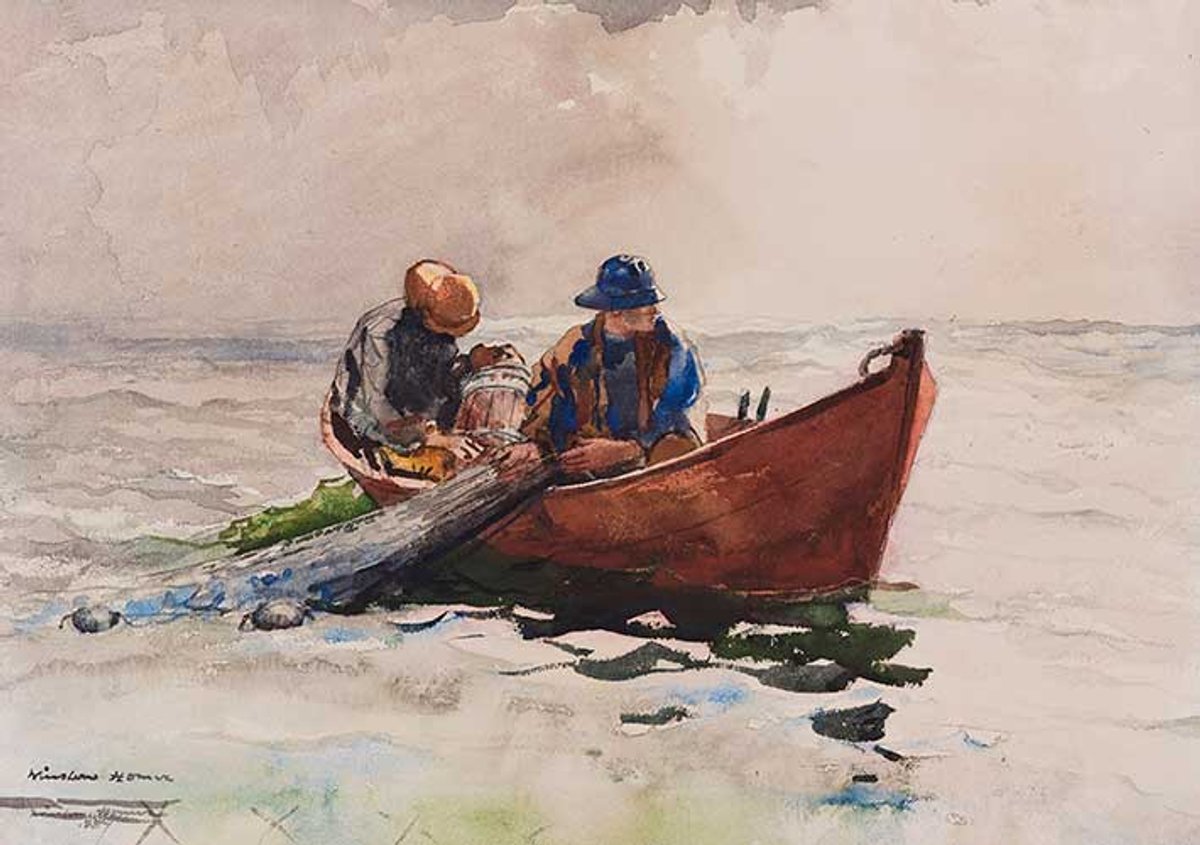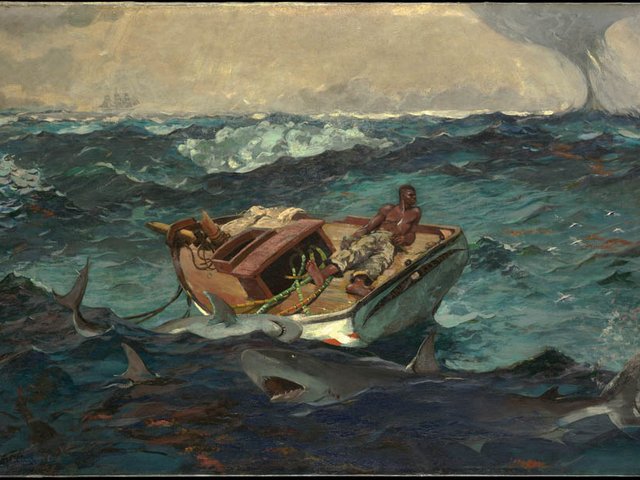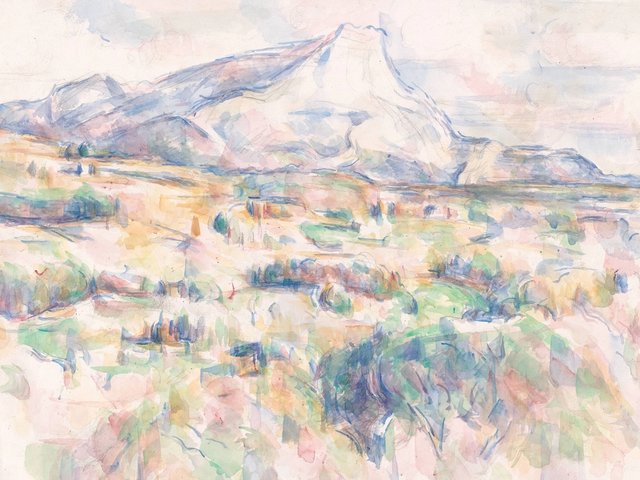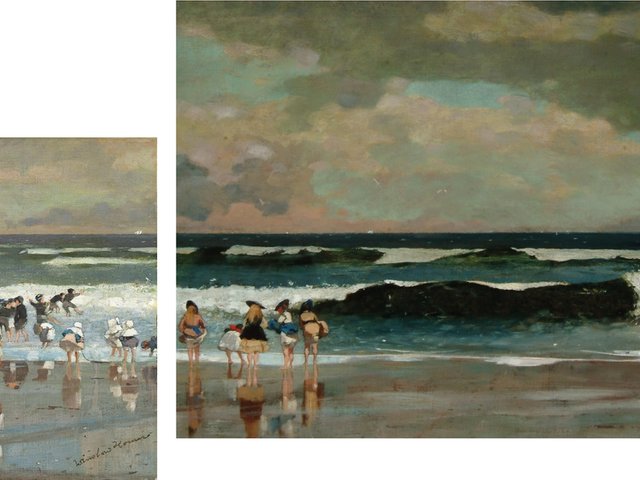Considered one of the most influential American painters of the 19th century, Winslow Homer (1836-1910) was a pioneer of maritime art, painting industrious fishermen with a keen reverence for the natural world. This month, Of Light and Air: Winslow Homer in Watercolour at the Museum of Fine Arts (MFA) in Boston, will bring together a rich selection of the Boston native’s work, including childhood drawings and his final, unfinished painting. At the heart of the show are Homer’s watercolours. Fragile and light-sensitive, these rarely seen pieces depict scenes the artist became famous for, including the rugged New England coast and the English seaside.
They look nearly as vibrant as the day Homer painted them
The setting of the MFA Boston is particularly apt. The museum was one of the first to support Homer’s career, acquiring Fog Warning (1885) in 1894, a painting of a lone fisherman rowing into a foreboding sea. Soon after, the museum began expanding its holdings, adding another ten oil paintings and nearly 50 watercolours by the artist—representing one of the largest collections of Homer’s work. Sensitive to light, the watercolours in Of Light and Air are seldom exhibited. Displaying them in lower light to protect against fading, the show will offer a chance to see dozens of these fragile works together for the first time in nearly 50 years.
“Since many of the watercolours have been in the MFA’s collection for decades—and in some cases over a century—they look nearly as vibrant as the day Homer painted them,” says the show’s co-curator Christina Michelon.
Among the highlights will be Leaping Trout (1889), a playful watercolour showing two fish mid-air, their spots and colouration rendered in precise detail. The work is noteworthy for its skilful execution and quirky imagery, and was the first Homer watercolour to be acquired by any museum, entering the MFA’s collection in 1899.
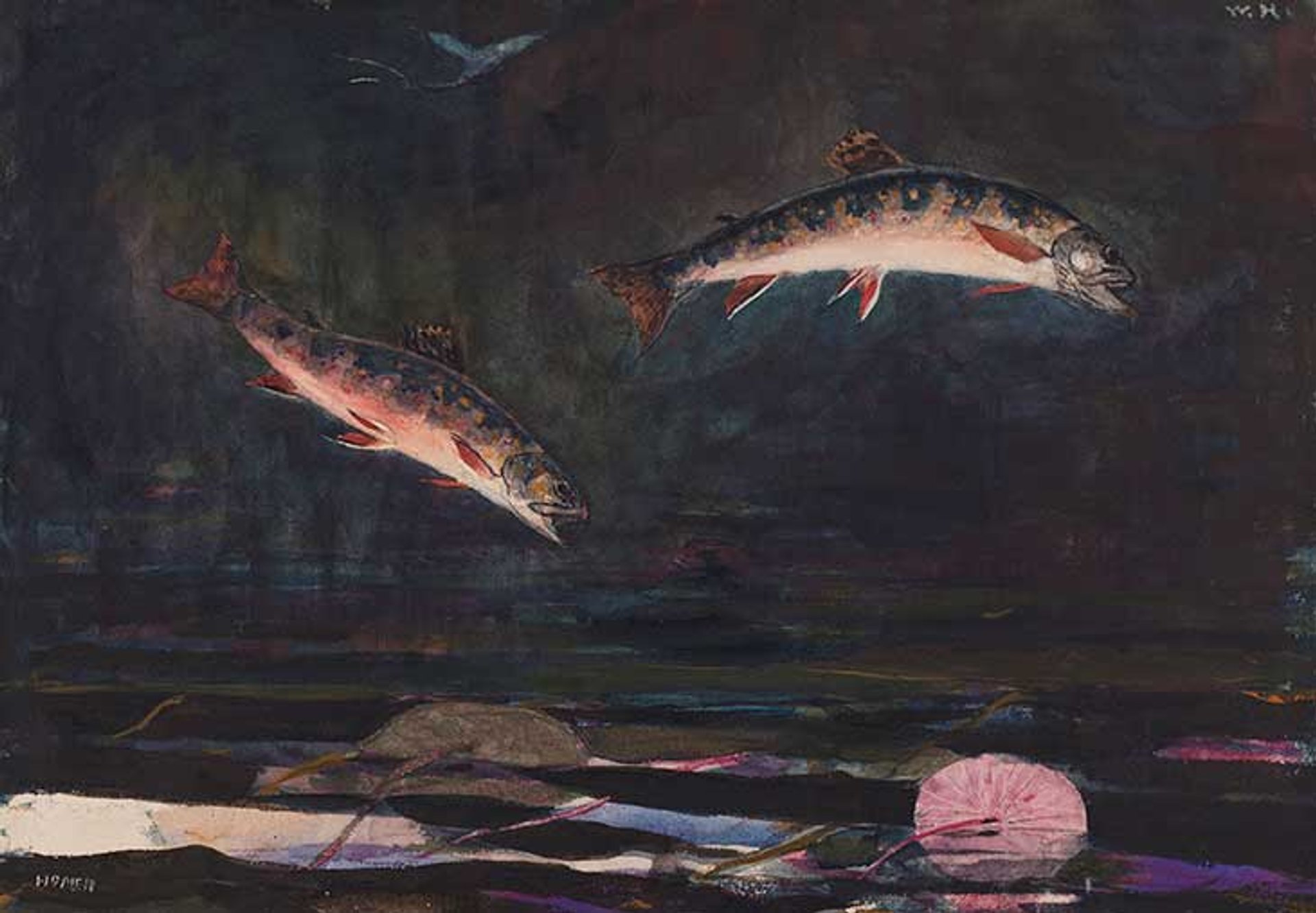
Leaping Trout (1889), the first of Winslow Homer’s watercolours to be acquired by any museum
© Museum of Fine Arts, Boston
“Homer began working seriously in the medium of watercolour mid-career at the age of 37,” says the co-curator Ethan Lasser. “We hope visitors are inspired by his example of trying something new and pushing the boundaries of what’s possible. Watercolour is a challenging and often unforgiving medium, but Homer kept experimenting and expanding his ability to work with it.”
Of Light and Air joins a recent lineup of exhibitions of Homer’s work, including shows at the Metropolitan Museum of Art, Harvard Art Museum and the Cape Ann Museum. Bringing together works in a variety of mediums, the MFA hopes to illustrate how Homer used materials to convey different subjects. “For example, in the oils he is often tackling grand narratives and existential questions, whereas his watercolours are much more immediate and observational,” Lasser explains.
The show will also feature an homage to Homer’s mother, Henrietta Benson Homer, who was a watercolour artist. One of her studies of monarch butterflies will be paired with a painting of his depicting swallowtails, which looks like a “quotation of his mother’s work not long after she passed away”, Michelon says. Presenting this deep, intimate view of Homer’s work, Michelon adds, is a way to inspire a new generation of visitors to “slow down and look closely, relish the details, and appreciate the nuances of the work and the environments they depict”.
• Of Light and Air: Winslow Homer in Watercolour, Museum of Fine Arts, Boston, 2 November-19 January 2026


